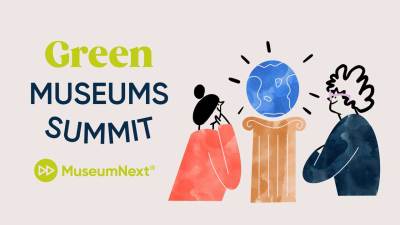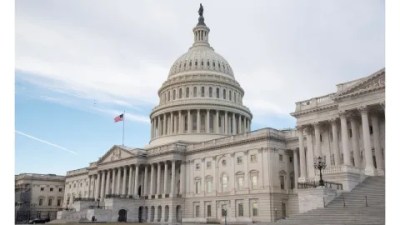
Heads up! The 2024 edition of CFM’s annual forecasting report is now available as a free PDF download. TrendsWatch: Navigating a Volatile Future explores how museums can adapt to the astounding pace of change in culture, climate, and technology.
Starting last year, AAM members and subscribers receive the report first, three months before the public release, as the Jan/Feb issue of Museum magazine. The new PDF complements the magazine by:
- Including hundreds of embedded links and sources for the facts, figures, and stories I reference in the report.
- Being compatible with screen readers.
- Providing an easy way to share the content with others, including colleagues, board members, funders, students, and planning partners.
- Making it possible to save the report to your digital files for future reference.
Because this report covers rapidly moving trends, we continue to update our coverage of each issue’s topics via news stories in the weekly e-newsletter Dispatches from the Future of Museums, in posts on the CFM Blog, and during sessions at the virtual Future of Museums Summit (October 29-30).
Here’s a round up of some recent news related to each of this year’s trends, with encouragement to submit related session proposals for the Summit.
Culture Wars 2.0
The latest trend within the current round of culture wars is the growing backlash to diversity, equity, and inclusion efforts—read this essay on the CFM blog for a summary of those developments. Meanwhile, there are some bright spots on the horizon as researchers and groups working to bolster civil civic conversations explore how we can dial down the heat.
Axios, February 6, 2024
A stunning 85% of Americans say the tone and nature of political debate has gotten worse over the last several years, according to Pew Research Center. The rising power and prominence of the nation’s loudest, meanest voices obscures what most of us personally experience: Most people are sane and generous — and too busy to tweet. UNITE, an organization of activists, professors and consultants, is appealing to that majority by leaning into a disappearing quality — treating others with dignity. [The group] is getting buzz with its “Dignity Index,” which scores tweets, cable news segments, debates, and speeches on a scale of 1 to 8. Those who used the index reported a “mirror effect.” Scoring others’ speech with dignity in mind pushe[s] them to consider their own speech.
If you are already using UNITE’s resources (e.g., Dignity Index, Dignity Principles, and Conversation Guide), or tools from other sources, to support civil conversations among staff and members of the public, I hope you submit a session proposal for the Future of Museums Summit sharing what you have learned from that work.
Meanwhile, we continue to see a push for legislation that restricts the activities of libraries and museums.
State Senate passes bill aimed at American Library Association
Capitol Beat March 1, 2024
The Republican-controlled Georgia Senate has passed legislation that would prohibit city, county, and regional libraries from using either tax dollars or private funds on any materials offered by the American Library Association (ALA). Senate Bill 390 cleared the upper chamber in the General Assembly 33-20 along party lines Thursday on Crossover Day, the deadline legislation had to pass either the state House or Senate to remain alive for the year. The ALA has become controversial in right-wing circles in recent years for promoting diversity, equity, and inclusion (DEI) in the selection of library materials and for opposing book banning and other forms of censorship.”
That particular bill died later in March, but it is a signal of sentiments driving attacks on whole cultural sectors and the nonprofit associations that support their work. Is your museum being affected by such legislation? Such impact might be direct (e.g., restricting museum content or programs) or indirect (e.g., via constraints on what local school districts can teach or what students can see or do on field trips). If so, that would be another very helpful set of learnings to share via a session.
AI Adolescence
While much of the coverage of generative Artificial Intelligence focuses on the marvelous things it can (or can almost) do, a growing number of thought leaders are drawing attention to harmful externalities of this technology, notable is its massive consumption of energy, and water, and its growing impact on the environment.
Generative AI’s environmental costs are soaring — and mostly secret
Nature, February 20, 2024
The artificial intelligence (AI) industry is heading for an energy crisis. It’s estimated that a search driven by generative AI uses four to five times the energy of a conventional web search. Within years, large AI systems are likely to need as much energy as entire nations. AI systems [also] need enormous amounts of fresh water to cool their processors and generate electricity. Legislators are taking notice. On 1 February, US Democrats led by Senator Ed Markey of Massachusetts introduced the Artificial Intelligence Environmental Impacts Act of 2024. The bill directs the National Institute for Standards and Technology to collaborate with academia, industry and civil society to establish standards for assessing AI’s environmental impact, and to create a voluntary reporting framework for AI developers and operators.
While legislators grapple with the impacts of AI, including its impact on privacy, intellectual property, and the environment, organizations and individuals can make informed choices about whether and how to use this emerging tech. I’m hoping to see proposals for the Future of Museum Summit addressing how museums are creating policies regarding the use of AI that take into account not only how it can help museums but also its impact on society, museum workers, and climate. Speaking of which, the third major trends we are focusing on this year is the urgent need to make progress towards…
Decarbonizing the Future
Even as I struggle to maintain my own optimism in the face of near term climate projections for this summer (record heat, massive hail, destructive storms, wildfires), I am heartened by a growing collection of stories documenting how museums are rising to the challenge of curbing climate change.
How Museums, Zoos and Public Gardens Lead by Example on Climate Change
Better Planet, February 26, 2024
The Phipps Conservatory and Botanical Gardens in Pittsburgh boasts some of the world’s greenest buildings. Their star is the Center for Sustainable Landscapes building, which generates all its own energy and captures and treats all its wastewater. To help [other museums] turn their facilities into showcases for environmental action, The Phipps developed a Climate Toolkit with practical advice on everything from energy use to environmentally friendly café meals. Working with partner organizations, the Phipps hosts workshops and facilitates an exchange of ideas among people who run gardens, zoos and museums. There are now 150 cultural institutions using the Climate Toolkit. [The Phipps’] youth climate initiative links young people in Pittsburgh with other groups of young people via museums around the country.
Utah museum’s ‘A Climate of Hope’ exhibit lets visitors explore solutions
The Salt Lake Tribune, March 24, 2024
“A Climate of Hope” —the Natural History Museum of Utah’s first new permanent exhibition in 12 years — is designed to inspire optimism and action for a better future in the face of climate change. The interactive exhibit shows how climate change impacts Utah, and how people around the state are implementing solutions. Visitors are shown volunteer opportunities in which they can take part to combat climate change at the local level. Jason Cryan, NHMU’s executive director, said the exhibit is a part of the museum’s larger climate initiative. “The ‘Climate of Hope’ initiative also includes large-scale sustainability measures,” he said. “We’re trying to see what it’s going to take to make this a net-zero carbon neutral operation. We have several research programs that are kind of aimed at sustainability, biodiversity and those kinds of things, so all of this wraps up under a very big umbrella.”
If your museum is doing good work like this—reducing its own carbon emissions, implementing a sustainability plan, fostering public awareness and cultivating hope for the future—please put together a panel and submit a proposal sharing that good work.
Loneliness
One of the shorter essays in TrendsWatch has struck a chord with readers, many of whom tell us that they feel that their lives and work have been affected by what Surgeon General Vivek Murthy has dubbed the Loneliness Epidemic. While some quibble that appellation is misleading (after all, loneliness isn’t catching, is it?) the evidence continues to mount that social isolation is a growing problem for all ages.
America’s happiness score drops amid a youth ‘midlife crisis’
The Washington Post, March 20, 2024
The United States fell from 15th in 2023 to 23rd in this year’s World Happiness Report, which was released [last week] to mark the United Nations’ International Day of Happiness. The country’s results varied dramatically among different age groups, however, with young people under age 30 ranking 62nd out of 143 countries for happiness, while U.S. adults age 60 and above ranked 10th. This is the first time the United States has slipped out of the top 20 since the report was first launched in 2012. Issues such as polarization, social media use and growing health and income disparities could play a role. The study found that “social support” and “social interactions of all kinds” are important for happiness and reducing loneliness.
Parents are feeling lonely. Here’s why it matters
CNN, April 24, 2024
A new national survey published by the Ohio State University Wexner Medical Center in Columbus [found that] 66% of 1,005 parents felt the demands of parenthood sometimes or frequently left them feeling isolated and lonely, while nearly 40% felt as if they have no one to support them in their parenting role. Nearly 4 in 5 parents would value a way to connect with other parents outside of work and home — that was 82% of moms and 74% of dads, according to the survey. Even then, however, many parents may not want to admit to their feelings of isolation and loneliness for fear of sounding like they do not care about their children.
Does your museum fill the need for various groups, including young people and parents, to network and form social connections? Do you have any replicable models you might share at the Summit?
Send us your session proposals!
The Future of Museums Summit Call for Proposals closes on July 12. Please send your pitches for the news, tools, advice and inspiration you would like to share with the field on these difficult and important topics.
Skip over related stories to continue reading article









Comments